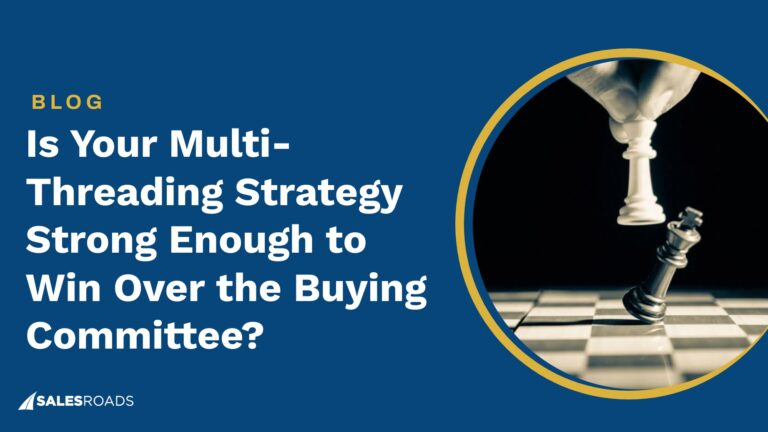Many companies overlook the importance of a well-defined sales cycle, opting for a more haphazard or impulsive sales strategy. Without a clear roadmap, sales teams may find themselves lost in a sea of leads, unable to effectively navigate the path from initial contact to a successful sale.
This lack of strategic planning can lead to missed opportunities, decreased customer satisfaction, and ultimately, a negative impact on the bottom line.
What Is a Sales Cycle?
A sales cycle is the series of steps a salesperson takes to move a potential customer from initial contact to a completed sale. It’s a structured process that helps businesses identify, qualify, and convert leads into customers.
The sales process stages or sales cycle steps can vary depending on the industry, product or service, and the specific sales methodology used. However, a typical sales cycle often includes customer research, prospecting, qualifying the customers, initial contact, presentation, handling objections, and closing the deal.
A full sales cycle encompasses all these stages, from initial contact to a successful sale. Effective sales cycle management involves tracking and analyzing each stage to identify areas for improvement and optimize the sales process.
Why Is the Sales Cycle Important?
Understanding and optimizing the sales cycle is crucial for business success for several reasons:
- Increased efficiency: A well-defined sales cycle helps salespeople streamline their activities and focus on the most promising leads.
- Improved conversion rates: By effectively managing each stage of the sales cycle, you can increase the likelihood of converting leads into customers.
- Enhanced customer satisfaction: A customer-centric sales cycle ensures that customers’ needs are met throughout the process, leading to higher satisfaction and loyalty.
- Data-driven decision-making: Tracking and analyzing the sales cycle provides valuable data that can be used to make informed decisions about sales strategies and resource allocation.
- Predictable revenue: A predictable sales cycle allows you to forecast revenue more accurately and plan for future growth.
By investing in sales cycle management, you can improve sales performance, increase revenue, and build stronger customer relationships.
What Are the 7 Sales Process Stages?
A well-structured sales cycle is essential for maximizing sales efficiency and conversion rates. Understanding the seven key stages can help sales professionals optimize their approach and achieve better results.
Customer Research
Before reaching out to potential customers, it’s crucial to conduct thorough research. This involves identifying your target market and understanding their needs, pain points, and buying behaviors.
Utilize industry data, social media analytics, and customer surveys to gather valuable insights. For instance, a software company selling CRM solutions might focus on researching industries with high customer acquisition costs or businesses looking to improve customer retention.
Prospecting
Prospecting involves identifying and generating potential leads. Effective prospecting strategies include networking, cold calling, social selling, email marketing, and attending industry events.
Consider using tools like LinkedIn Sales Navigator to streamline your prospecting efforts and target qualified leads.
Lead Qualification
Once you’ve identified potential leads, it’s essential to qualify them to determine if they are a good fit for your product or service. This involves assessing factors such as budget, decision-making authority, and alignment with your target customer profile.
Use qualifying questions to gather information and determine if the lead is worth pursuing. For example, a sales rep selling cloud-based accounting software might ask prospective customers about their current accounting system, team size, and growth plans.
Initial Contact
The initial contact is your first opportunity to make a positive impression. Craft a personalized and engaging message that introduces yourself, your company, and the value you can provide. Tailor your approach to the specific lead and their needs. Sales funnel email sequence plays a huge factor.
For example, when reaching out to a busy executive, keep your initial email concise and focused on the benefits of your product or service.
Presentation
During the presentation stage, you’ll have the opportunity to showcase your product or service and demonstrate its value to the customer. Customize your presentation to address the specific needs and pain points of the lead.
Use compelling storytelling, visuals, and customer testimonials to build trust and credibility.
Handling Objections
It’s inevitable that you’ll encounter objections during the sales process. Anticipate common objections and prepare thoughtful responses.
Listen attentively to the customer’s concerns and address them directly. Use empathy and understanding to build rapport and overcome objections.
Closing the Deal
The closing stage is where you’ll ask the customer to commit to a purchase. Be confident, assertive, and prepared to negotiate if necessary. Offer incentives or limited-time offers to encourage the customer to make a decision. Remember, the goal is to create a win-win situation for both you and the customer.
How to Measure Sales Effectiveness
Measuring sales effectiveness is essential for understanding your sales team’s performance and identifying areas for improvement.
By tracking key metrics, you can gain valuable insights into your sales cycle, identify bottlenecks, and optimize your sales strategies.
Key Metrics to Track
- Conversion Rate: Measure the percentage of leads that convert into customers. This metric helps you assess the overall effectiveness of your sales process. For example, if your conversion rate is low, you may need to revisit your lead qualification criteria or improve your sales presentations.
- Average Sales Cycle Length: Track the average time it takes to close a deal. A long sales cycle can indicate inefficiencies in your process or a need to improve your sales skills. By analyzing the average sales cycle length, you can identify bottlenecks and take steps to streamline your approach.
- Sales Quota Attainment: Monitor your sales team’s performance against sales quotas. This metric helps you assess individual performance and identify top performers. Analyze the factors contributing to successful quota attainment, such as effective prospecting techniques, strong negotiation skills, and excellent customer relationships.
- Customer Acquisition Cost (CAC): Calculate the cost of acquiring a new customer. This metric helps you evaluate the efficiency of your marketing and sales efforts. A high CAC may indicate that your acquisition strategies are too expensive or that your conversion rates are low.
- Customer Lifetime Value (CLTV): Estimate the total revenue a customer will generate over their lifetime. This metric helps you assess the long-term value of your customers and identify opportunities for upselling and cross-selling. A high CLTV indicates that your customers are satisfied and loyal.
- Sales Activity Metrics: Track key sales activities, such as the number of calls made, emails sent, and meetings held. This data can help you identify areas where your sales team may be falling short. For example, if your team is not making enough calls, you may need to provide additional training or coaching.
- Customer Satisfaction: Measure customer satisfaction through surveys and feedback. This metric helps you assess the quality of your sales interactions and identify areas for improvement. High customer satisfaction can lead to repeat business, referrals, and positive word-of-mouth.
Strategies to Accelerate Your Sales Cycle
A shorter sales cycle can lead to increased revenue and improved customer satisfaction. By implementing effective strategies, you can streamline your sales process and expedite the time it takes to close deals.
Optimize Lead Qualification
Refine your lead qualification criteria to ensure that you’re focusing on prospects who are most likely to convert. Use qualifying questions to identify decision-makers, assess budget constraints, and determine the level of interest in your product or service.
Leverage Technology and Automation
Utilize sales enablement tools and automation to streamline administrative tasks, improve efficiency, and provide your sales team with the resources they need to succeed. Consider using CRM, lead management software, email marketing platforms, and sales analytics tools to enhance your sales process.
For example, a CRM system can help you track leads, manage opportunities, and automate follow-up tasks.
Enhance Communication
Effective communication is essential for building relationships and closing deals. Ensure that your sales team has clear communication channels and is equipped with the necessary training to effectively communicate with prospects and customers. Utilize tools like video conferencing and instant messaging to facilitate timely and efficient communication.
Develop a Strong Value Proposition
Clearly articulate the unique value your product or service offers to potential customers. Highlight the benefits and how your solution addresses their specific needs or pain points. A compelling value proposition can help you differentiate yourself from competitors and persuade prospects to take action.
For example, a marketing automation platform might emphasize its ability to save time, improve lead generation, and increase ROI.
Streamline the Sales Process
Identify and eliminate unnecessary steps or bottlenecks in your sales cycle. Streamline your processes by automating repetitive tasks, reducing paperwork, and improving alignment between sales and marketing departments.
Build Strong Relationships
Focus on building long-term relationships with your customers. Provide excellent customer service, address their needs promptly, and exceed their expectations. By fostering trust and loyalty, you can increase repeat business and referrals.
Train and Empower Your Sales Team
Invest in ongoing training and development to equip your sales team with the skills and knowledge they need to succeed. Provide opportunities for professional growth and empower your team to take ownership of their work.
Leverage Data and Analytics
Use data and analytics to track your sales performance, identify trends, and make data-driven decisions. Analyze key metrics such as conversion rates, sales cycle length, and customer satisfaction to identify areas for improvement.
Align Sales and Marketing
Ensure that your sales and marketing teams are working together seamlessly to achieve common goals. Align your marketing efforts with your sales strategy and provide your sales team with the necessary marketing materials and support.
For example, marketing can provide sales with targeted lead lists and personalized email templates.
Utilize Customer Feedback
Gather customer feedback through surveys, reviews, and one-on-one conversations. Use this feedback to identify areas for improvement and enhance your sales process. For example, customer feedback might reveal that prospects are struggling to understand your product or service. By addressing these concerns, you can improve your sales effectiveness.
Bottom Line
A well-structured sales cycle is the backbone of a successful business. It provides a clear roadmap for your sales team, ensuring that they are focused on the right activities at the right time. By optimizing your sales cycle, you can improve efficiency, increase conversion rates, and ultimately drive revenue growth.
Remember, a haphazard or rushed sales cycle can have negative consequences. Skipping important stages like needs analysis or failing to address customer concerns can lead to lost deals and damaged relationships.










